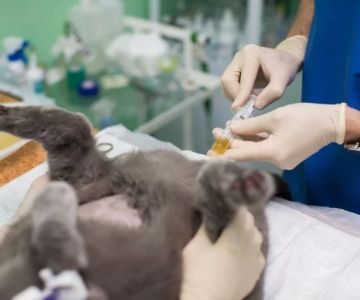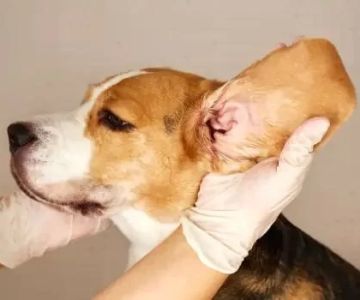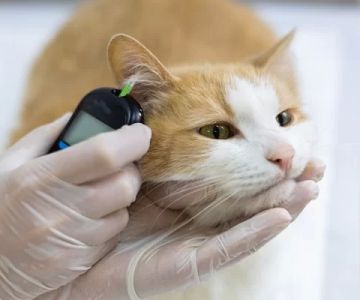Training My Dog to Be Calm Around Food: A Personal Journey
As a dog owner, one of the biggest challenges I faced was teaching my dog, Max, to be calm around food. Like many dogs, Max would become overly excited whenever he saw food, especially when it was time for his meals. He would jump, bark, and even try to snatch food right off the counter. It was frustrating, and I realized that I needed to take action to teach him better behavior around food. After several months of training and patience, I’m happy to share what I learned and how I was able to help Max become calm and well-behaved when food was around.
Why Dogs Get Excited Around Food
Before diving into the training techniques, it’s important to understand why dogs behave the way they do around food. In Max’s case, his excitement stemmed from a natural instinct to seek out food and a lack of boundaries around it. For many dogs, food is a high-value resource that triggers excitement, and without proper training, they can develop behaviors such as jumping, begging, or even showing aggression when food is involved.
For some dogs, food aggression can also be linked to anxiety, insecurity, or a lack of confidence. When I first started training Max, I realized that his food-related behavior wasn’t just about greed—it was also about feeling the need to compete for food, especially when other people or pets were around. By understanding these behaviors, I could take the necessary steps to help him feel more secure and teach him how to behave appropriately around food.
1. Establishing Boundaries Around Food
The first step I took was to establish clear boundaries around food. This is essential to teach a dog that food is something they receive only when it’s offered to them in a calm, controlled way. I began by teaching Max the "wait" command, which was key to reducing his impulsive behavior when it came to food.
How to Teach the "Wait" Command
To begin, I placed Max’s food bowl down, but I didn’t let him eat it immediately. I told him “wait” in a calm voice and only allowed him to start eating once he was sitting calmly and focused on me. At first, this was difficult for him because he was used to grabbing the food right away. But with consistent practice, Max began to understand that the “wait” command meant he had to remain calm and patient before getting his food.
Rewarding Calm Behavior
During this training, I made sure to reward Max every time he stayed calm and waited patiently. I used positive reinforcement by offering him praise and occasionally a small treat. Over time, he started to associate calm behavior with getting rewarded, which made him more willing to stay calm when food was involved.
2. Managing Food Aggression and Begging
Another common issue I had to deal with was Max’s tendency to beg during meals. Whether it was mealtime for the family or a simple snack, Max would try to sneak food or beg for a bite. Begging can be a tough behavior to break, especially if your dog has learned that begging gets them what they want. In Max’s case, I realized that I had unintentionally reinforced this behavior by giving in and offering him scraps from the table on occasion.
How to Stop Begging for Food
To stop begging, I had to create a consistent boundary. I began by not giving Max any food while I was eating, and I made sure that all family members followed this rule as well. I also made sure to avoid looking at Max while eating, as even eye contact can encourage begging. Instead of focusing on his begging behavior, I redirected his attention to his own food bowl and encouraged him to eat his meals calmly.
Using a Place Command
One of the most effective methods I used to stop begging was the “place” command. I trained Max to go to his bed or designated spot while we were eating. I started by rewarding him with treats and praise every time he went to his spot and stayed there quietly. Eventually, Max learned that when we were eating, he was to stay in his spot and not beg. This gave him a clear expectation of where he needed to be during meals, and it also gave him the opportunity to relax instead of being anxious about food.
3. Teaching Impulse Control Around Food
Another essential part of training Max to be calm around food was teaching him impulse control. Impulse control training is all about helping your dog learn to resist the urge to act impulsively, especially when it comes to food. To do this, I started incorporating several exercises that encouraged Max to focus on me and control his impulses.
Impulse Control Exercises
One exercise I found helpful was the "leave it" command. I would place a piece of food in front of Max and say “leave it” when he tried to grab it. At first, he would attempt to snatch the food, but with patience, he learned that "leave it" meant he had to look away and wait. When he complied, I would reward him with the food as a positive reinforcement. Gradually, I increased the difficulty by placing the food in different locations and extending the duration before he could eat it. This exercise helped Max build self-control and strengthened his understanding of boundaries around food.
Using a Slow Feeder to Promote Calmness
Another way I helped Max control his impulses was by using a slow feeder bowl. These bowls are designed with ridges or obstacles that make it harder for dogs to gulp down their food quickly. By using a slow feeder, I encouraged Max to eat more slowly and mindfully, which helped him stay calm and focused during meals. It also helped prevent him from eating too fast, which could lead to digestive issues.
4. Addressing Resource Guarding Behavior
Resource guarding, or protecting food from others, is another common issue that can arise when dogs feel insecure around food. Although Max wasn’t initially a resource guarder, there were times when he would growl or act possessive over his food. To address this, I made sure to desensitize him to my presence around his food bowl. I started by adding tasty treats to his bowl while he was eating, and I made sure to reward him when he stayed calm and allowed me near his food. Over time, he learned that having me around while eating wasn’t something to fear and that food would always be plentiful.
Desensitizing Your Dog to Food-Related Anxiety
Desensitization involves gradually exposing your dog to situations that might trigger anxiety, like someone approaching their food bowl, while pairing those experiences with positive outcomes. By consistently rewarding calm behavior and showing Max that food was always available, I helped reduce his anxiety and guard dog tendencies.
5. Patience and Consistency Are Key
Training a dog to be calm around food takes time and consistent effort. There were days when Max’s excitement around food would still get the best of him, and I had to remind myself not to get discouraged. The most important lesson I learned during this process was that consistency is key. Every time I reinforced calm behavior and set clear boundaries, Max became more relaxed and well-behaved around food.
Reinforcing Good Behavior
Each time Max exhibited good behavior around food, such as waiting calmly or not begging, I rewarded him with treats or praise. Over time, he began to associate calm behavior with positive outcomes, making it easier for him to remain composed when food was present.











